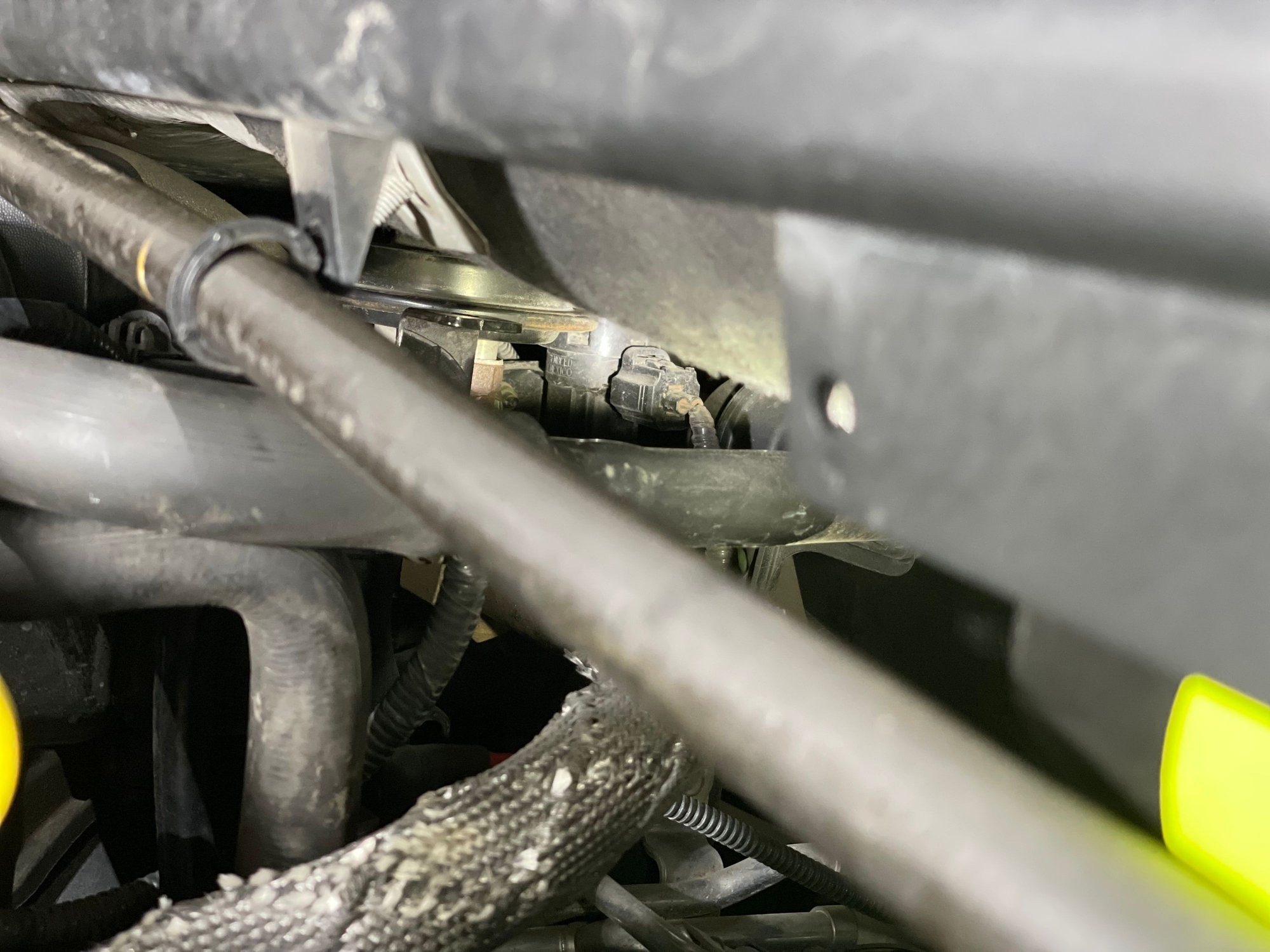Experiencing a rough idle or engine stalling in your Ford Explorer? Have you recently scanned your vehicle and encountered the P1409 OBD2 code? This code, specific to Ford vehicles, indicates an issue within the Evaporative Emission Control System, particularly pointing towards the EGR Vacuum Regulator Solenoid circuit. Understanding what this code means, its potential causes, and how to address it is crucial for maintaining your Ford Explorer’s performance and emission standards.
The P1409 code essentially signals that the Powertrain Control Module (PCM) has detected a malfunction in the EGR Vacuum Regulator Solenoid circuit. This solenoid is a critical component in your Explorer’s Exhaust Gas Recirculation (EGR) system. The EGR system is designed to reduce harmful NOx emissions by recirculating a portion of the exhaust gas back into the engine intake. The EGR Vacuum Regulator Solenoid, as its name suggests, regulates the vacuum applied to the EGR valve, controlling the flow of exhaust gas.
Several symptoms can accompany the P1409 code in your Ford Explorer, alerting you to a potential problem:
- Check Engine Light (CEL) Illumination: This is the most obvious sign, as the PCM triggers the CEL to warn you of a detected issue.
- Rough Idle: An improper EGR system operation can lead to an unstable and rough engine idle.
- Engine Stalling: In some cases, especially at low RPMs, a faulty EGR system can cause the engine to stall.
- Poor Fuel Economy: An inefficient EGR system can negatively impact your Ford Explorer’s fuel efficiency.
- Failed Emissions Test: Since the EGR system is crucial for emission control, a P1409 code can lead to failing an emissions test.
The P1409 code on your Ford Explorer can be triggered by various underlying issues. Common causes include:
- Faulty EGR Vacuum Regulator Solenoid: The solenoid itself may be defective, failing to regulate vacuum properly.
- Wiring or Connector Issues: Damaged, corroded, or loose wiring or connectors in the solenoid circuit can disrupt the electrical signal. Moisture intrusion, as experienced in the original post after a car wash, can be a significant factor in electrical issues.
- Vacuum Line Leaks or Blockages: Problems with the vacuum lines connected to the EGR Vacuum Regulator Solenoid can prevent proper vacuum regulation.
- PCM Malfunction (Rare): Although less common, a faulty PCM could misinterpret signals or incorrectly trigger the P1409 code.
Diagnosing and resolving the P1409 code on your Ford Explorer typically involves a systematic approach:
- OBD2 Scan Verification: Confirm the P1409 code using an OBD2 scanner. Clear the code and see if it returns.
- Visual Inspection: Inspect the EGR Vacuum Regulator Solenoid, its wiring, and connectors for any visible damage, corrosion, or loose connections. Pay close attention to vacuum lines for cracks, leaks, or blockages.
- Solenoid Testing: Use a multimeter to test the EGR Vacuum Regulator Solenoid’s resistance and voltage, comparing readings to the manufacturer’s specifications.
- Wiring Circuit Testing: Check the continuity and voltage of the wiring in the solenoid circuit to identify any breaks or shorts.
- Vacuum Line Check: Inspect vacuum lines for leaks or blockages. Use a vacuum gauge to test vacuum pressure at the solenoid.
[paragraph break]

Ford Explorer EGR Valve and EGR Vacuum Regulator Solenoid location – Common components related to OBD2 code P1409
[paragraph break]
Once the root cause is identified, appropriate repairs can be performed. Common solutions for a Ford Explorer P1409 code include:
- EGR Vacuum Regulator Solenoid Replacement: If the solenoid is found to be faulty, replacing it is usually necessary.
- Wiring Repair or Replacement: Repairing or replacing damaged wiring or connectors in the solenoid circuit can resolve electrical issues. Ensure proper protection against moisture to prevent recurrence, especially if water intrusion was a factor.
- Vacuum Line Replacement: Replace any cracked, leaking, or blocked vacuum lines.
- PCM Diagnosis and Repair (If Necessary): If PCM malfunction is suspected, further professional diagnosis and potential repair or replacement may be required.
Addressing the P1409 code promptly is important for your Ford Explorer’s performance, fuel efficiency, and emission compliance. By understanding the code, its causes, and diagnostic steps, you can effectively troubleshoot and resolve this issue, ensuring your Explorer runs smoothly and efficiently. If you are not comfortable performing these diagnostic and repair procedures yourself, it is always recommended to consult a qualified mechanic.